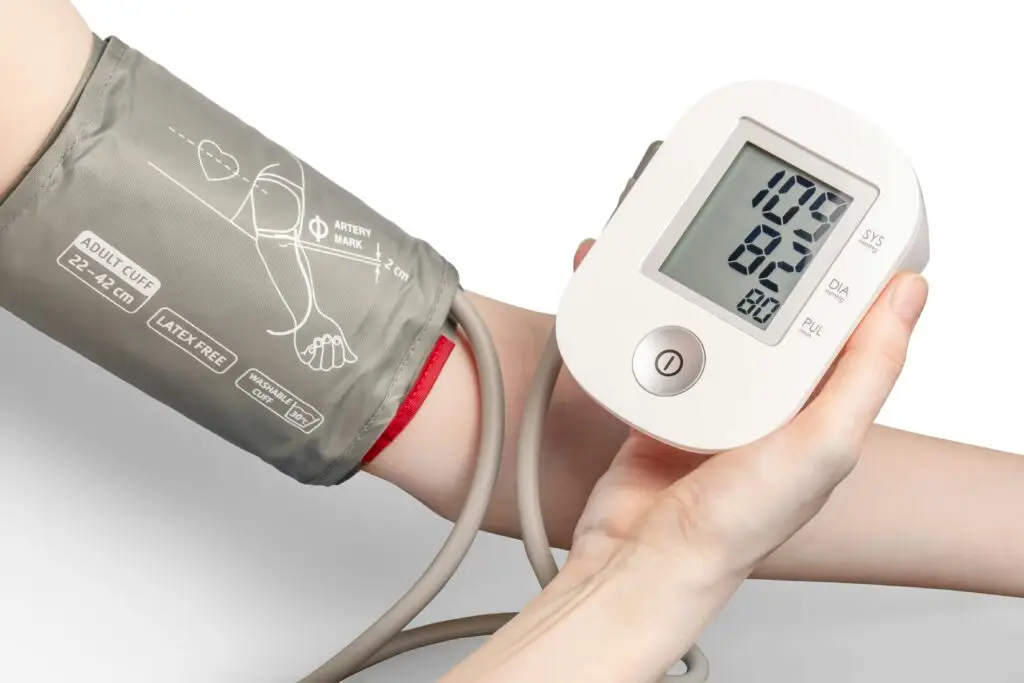
Overview
A heart attack, medically known as a myocardial infarction, happens when blood flow to a part of the heart muscle is severely reduced or completely blocked, often due to a buildup of fatty plaques in the arteries that rupture and form a clot. This blockage starves the heart of oxygen and nutrients, leading to damage or death of heart tissue if not addressed promptly. Understanding your body is key to maintaining heart health, everyone has an innate ability to sense when something feels off, like unusual fatigue or subtle discomfort that lingers. However, heart attacks often present with not-so-obvious signs that can build up over time, making it crucial to pay attention to these whispers from your body before they turn into a roar. By tuning into these early indicators, you empower yourself to seek timely medical help, potentially averting a life-threatening event and fostering a deeper connection with your overall well-being.
Heart Attack and Cardiac Arrest
A heart attack occurs when a coronary artery becomes blocked, typically by a blood clot formed on ruptured plaque, cutting off blood supply to the heart muscle and causing tissue damage. This can unfold gradually with warning signs or strike suddenly, but it’s fundamentally a plumbing issue in the heart’s blood vessels. While many survive with quick intervention, untreated heart attacks can lead to complications like heart failure or irregular rhythms.
In contrast, cardiac arrest is an electrical malfunction where the heart suddenly stops beating effectively, halting blood flow to the body and brain. It’s often triggered by a heart attack but can also stem from other causes like arrhythmias or trauma. Without immediate CPR or defibrillation, cardiac arrest leads to death within minutes, differing from a heart attack where the heart may still beat albeit damaged.
Heart Attack Signs a Month Before
Heart attacks don’t always strike out of the blue; subtle symptoms can emerge up to a month in advance, signaling reduced blood flow to the heart. These early warnings are your body’s way of alerting you to potential danger, and ignoring them could escalate to a full-blown crisis. If you notice any of the following persistent signs, consult a healthcare professional immediately, as they might indicate an impending heart attack and warrant lifestyle changes or medical evaluation to mitigate risks.
Persistent Fatigue
Unexplained and overwhelming tiredness that doesn’t improve with rest can be an early red flag, as the heart struggles to pump blood efficiently, leaving you feeling drained even after minimal activity. This isn’t your typical end-of-day exhaustion but a profound fatigue that interferes with daily life.
- Lasts for days or weeks without an obvious cause like poor sleep or overwork.
- Often worsens with physical exertion but persists at rest.
- May accompany other symptoms like weakness or dizziness.
- More common in women as an atypical sign.
Increased and Continuous Anxiety
A sudden surge in anxiety or a looming sense of doom without a clear trigger might stem from the heart’s distress signals affecting your nervous system, creating unexplained worry or panic. This emotional unrest can feel like impending danger, even in calm situations.
- Feels disproportionate to stressors in your life.
- May include restlessness, irritability, or trouble concentrating.
- Often paired with physical symptoms like rapid heartbeat.
- Can mimic anxiety disorders but warrants cardiac check if persistent.
Persistent Difficulty in Breathing
Shortness of breath that lingers, especially during routine activities or at rest, indicates the heart isn’t supplying enough oxygenated blood, causing fluid buildup in the lungs. This can feel like you’re constantly catching your breath.
- Occurs without exertion, like while lying down or talking.
- May worsen at night, leading to sleep disturbances.
- Accompanied by wheezing or a tight chest sensation.
- A key sign in both men and women, often overlooked as asthma.
Persistent Body Pains in Arms, Shoulders, Neck or Back
Aching or discomfort radiating to the upper body areas signals nerve pathways shared with the heart, where pain from reduced blood flow manifests elsewhere. This can feel like muscle strain but doesn’t resolve with rest.
- Pain may start in the chest and spread outward.
- Often affects the left arm but can involve both sides.
- Includes jaw or teeth pain in some cases.
- More subtle in women, resembling indigestion or soreness.
Frequent Nausea or Vomiting
Recurrent queasiness, indigestion, or vomiting without dietary cause arises when the heart’s stress affects the digestive system via shared nerves, mimicking stomach issues. This can be dismissed as food poisoning or flu.
- Persists beyond a single episode, often with heartburn.
- May include abdominal pain or bloating.
- More prevalent in women as an atypical symptom.
- Worsens with other signs like sweating or fatigue.
Persistent Cold Sweats and Heartburn
Unexplained clammy sweats, especially at rest, combined with burning chest sensations, point to autonomic nervous system activation from heart strain. This isn’t exercise-induced sweat but a cold, sticky feeling signaling distress.
- Sweats occur without heat or activity.
- Heartburn feels like acid reflux but resists antacids.
- Can alternate with hot flashes in some individuals.
- Often a precursor to more acute symptoms.
Heart Attack Emergency and First Aid
Heart attacks can erupt suddenly, turning a normal day into a medical emergency in moments, with intense symptoms overwhelming the body. Acting fast is vital—every minute counts to minimize heart damage. Follow these five essential steps to provide immediate aid while waiting for professionals.
- Step 1: Call emergency services. Dial 911 immediately; don’t wait to see if symptoms subside, as paramedics can start treatment en route.
- Step 2: Help the person rest comfortably. Have them sit or lie down with knees bent and head supported to ease heart strain; loosen tight clothing.
- Step 3: Administer aspirin if available. Give a 325mg aspirin to chew slowly (unless allergic or advised against), as it thins blood and reduces clotting.
- Step 4: Monitor and reassure. Stay calm, note symptoms, and keep them talking if possible to prevent fainting.
- Step 5: Perform CPR if needed. If they become unresponsive and stop breathing, begin hands-only CPR at 100-120 compressions per minute until help arrives.
Heart Attack Signs for Men
Men often experience classic heart attack symptoms centered around the chest, but these can vary in intensity and may share similarities with women’s signs, though typically more pronounced in physical discomfort. Recognizing these promptly can be lifesaving, as men are at higher risk starting from age 45.
- Crushing chest pain or pressure lasting minutes.
- Pain radiating to left arm, neck, or jaw.
- Shortness of breath during minimal activity.
- Profuse sweating and nausea.
- Sudden dizziness or fatigue.
Heart Attack Signs for Women
Women may face more subtle or atypical symptoms that mimic other conditions, making them harder to identify, yet they overlap with men’s in areas like chest pain. From age 55 onward, women’s risk rises, and awareness of these variations is crucial for early intervention.
- Upper back or shoulder pain resembling a pulled muscle.
- Jaw, neck, or abdominal discomfort.
- Extreme fatigue or weakness without cause.
- Nausea, vomiting, or indigestion-like symptoms.
- Shortness of breath, anxiety, or lightheadedness.
Word from Doctor Zara
Taking these early signs of a heart attack seriously is imperative, as they can escalate to deadly outcomes if ignored your heart’s subtle alerts are not to be dismissed. For quick advice or concerns, feel free to reach out to me at Drzaramulla@gmail.com. Remember, this information is educational and not a substitute for professional medical care; always visit your doctor for personalized treatment, considering your health history, age, risk factors like high blood pressure, diabetes, or family history, and tailored medications.
Frequently Asked Questions
- What causes a heart attack?
A: It’s primarily due to blocked arteries from plaque buildup, leading to clots; risk factors include smoking, high cholesterol, and obesity. - How do heart attack symptoms differ in women?
A: Women often have nausea, back pain, or fatigue rather than classic chest pain. - Can heart attacks be prevented?
A: Yes, through healthy diet, exercise, quitting smoking, and managing conditions like diabetes. - What should I do if I suspect a heart attack?
A: Call 911 immediately and chew aspirin if advised. - How long does recovery take after a heart attack?
A: It varies, but rest for weeks, followed by cardiac rehab; full recovery may take months. - Is fatigue always a sign of heart attack?
A: No, but persistent unexplained fatigue warrants a checkup. - What’s the difference between heart attack and angina?
A: Angina is temporary chest pain from reduced blood flow; heart attack causes permanent damage. - Can young people have heart attacks?
A: Yes, especially with risk factors like family history or drug use, though rarer under 40

